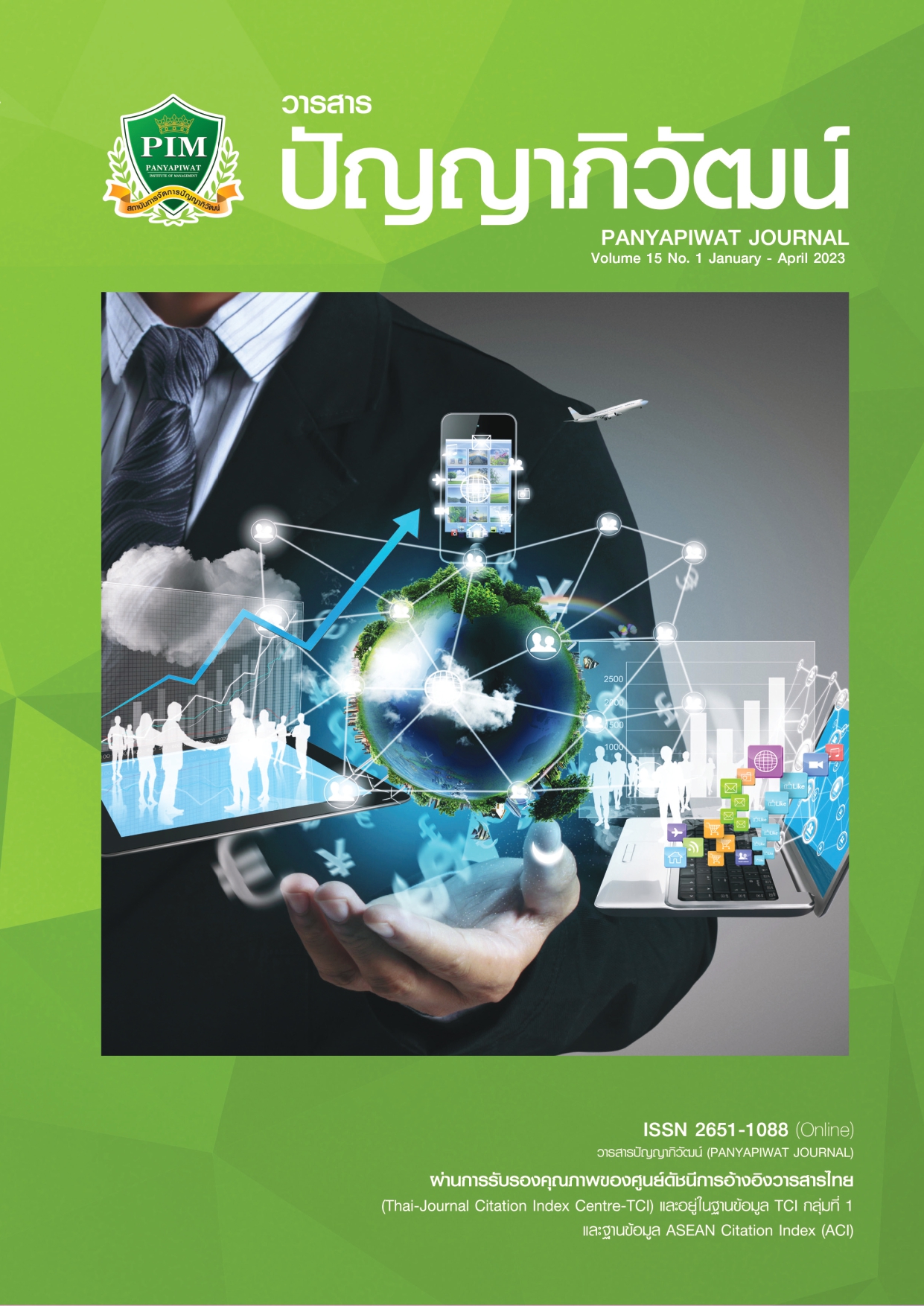THE PROTOTYPE DEVELOPMENT OF THE INSTITUTE TO INCREASE THE POTENTIAL OF THE MANPOWER TO SUPPORT THE INDUSTRIAL GROWTH IN THE EASTERN ECONOMIC CORRIDOR
Main Article Content
Abstract
The purposes of this research were (1) to study the current state of manpower and the demand for the characteristics of manpower in the Eastern Economic Corridor industries and (2) to develop a prototype of the Institute to Increase the Potential of Manpower to Support the Growth of Industries in the Eastern Economic Corridor.
The research sample groups consisted of the following: (1) a group of 17 experts classified into experts on system development, experts on management, experts on educational technology, and experts on personnel development; (2) a group of 30 entrepreneurs or their representatives in the Eastern Economic Corridor; and (3) a group of 453 personnel in the Eastern Economic Corridor whose educational qualifications being not lower than the vocational certificate level, all of whom were obtained by multi-stage random sampling. The sample size was determined based on Krejcie and Morgan’s Sample Size Table. The employed research tools were (1) an assessment form for the draft of the Institute for Manpower Development to Support the Industrial Growth in the Eastern Economic Corridor; (2) question guidelines for the focus group discussion to investigate the draft of the Institute for Manpower Development to Support the Industrial Growth in the Eastern Economic Corridor; (3) question guidelines for interviewing the experts; (4) a questionnaire for entrepreneurs; and (5) a questionnaire for the personnel. Research data were analyzed with the use of arithmetic mean.
The research results were as follows:
(1) Regarding the current state of manpower, the soft skill level of the workforce had the mean of 2.71, which was at the moderate level; while the need for soft skill development had the mean of 3.91, which was at the high level. On the other hand, the hard skill level of the workforce had the mean of 2.66, which was at the moderate level; while the need for hard skill development had the mean of 4.17, which was at the high level, with the standard deviation of 0.48.
(2) The proposed prototype of the Institute for Manpower Development to Support the Industrial Growth in the Eastern Economic Corridor was an independent organization established for conducting the study and research on development of the potential of manpower. It had two distinguished characteristics: (1) it was an established institute with the project coordination center being located in the Faculty of Education, Burapha University and (2) it was a virtual office consisting of six main components: (2.1) the philosophy, (2.2) the goals, (2.3) the resource, (2.4) the administrative structure, (2.5) the process, and (2.6) the evaluation and improvement.
Article Details

This work is licensed under a Creative Commons Attribution-NonCommercial-NoDerivatives 4.0 International License.
I and co-author(s) certify that articles of this proposal had not yet been published and is not in the process of publication in journals or other published sources. I and co-author accept the rules of the manuscript consideration. Both agree that the editors have the right to consider and make recommendations to the appropriate source. With this rights offering articles that have been published to Panyapiwat Institute of Management. If there is a claim of copyright infringement on the part of the text or graphics that appear in the article. I and co-author(s) agree on sole responsibility.
References
Buapliansi, N. (2018). Personnel development model in the Eastern Economic Corridor to support future target industries. Journal of Suvarnabhumi Institute of Technology, 4(1), 303-315.
Department of Employment. (2018). Demand for labor in the Eastern Economic Corridor. Department of Employment.
Government Big Data Institute (GBDi). (2020). What is big data? https://bigdata.go.th/big-data-101/what-is-big-data/
Khlaisang, J. (2013). MOOCs pedagogy: From OCW, OER to MOOCs, a learning tool for the digital learner. In The National Academic Conference on e-learning 2013 (pp. 276-285). Thailand Cyber University.
Krejcie, R. V., & Morgan, D. W. (1970). Determining sample size for research activities. Educational and Psychological Measurement, 30(3), 607-610.
Kuchonthara, P. (2014). Developing blended learning and flexible learning styles to promote lifelong learning for working adults [Doctoral dissertation]. Srinakharinwirot University.
Learning Institute of King Mongkut’s University of Technology Thonburi. (2017). Learning style for the new generation. http://www.okmd.or.th/okmd-opportunity/FutureLearningPlatform/899/Digilearn_infographic
National Statistical Office. (2020). Demographic statistics population and housing. http://statbbi.nso.go.th/staticreport/page/sector/th/01.aspx
Office of the Education Council. (2017). State of Education in Thailand Year 2015/2016 The need for competition and decentralization in the Thai education system. 21 Century. https://riped.org/wp-content/uploads/2020/09/ONEC_2558-2559.pdf
Office of the National Economics and Social Development Council. (2017). National strategy 2018-2037. https://www.eeco.or.th/web-upload/flecenter/html/establishment/Feasibility/003.pdf
Onchawiang, D., & Thamma, D. (2021). Big data and the development of manpower potential. Manpower Potential Development Institute for Eastern Economic Corridor, 1(2), 27-44.
Thailand Development Research Institute. (2018). Digital manpower development study project to support the target industry (S-curve) and Development of the Eastern Economic Corridor. https://tdri.or.th/2018/09/digital-manpower/
The Eastern Economic Corridor Office of Thailand. (2018). Personnel development, education, research and technology action plan to support the development of the Eastern special development zone. https://www.eeco.or.th/web-upload/flecenter/untitled%20
folder/EEC013.pdf
The Eastern Economic Corridor Office of Thailand. (2019). Personnel skill development according to the EEC model. https://www.eeco.or.th/th/eec-model


